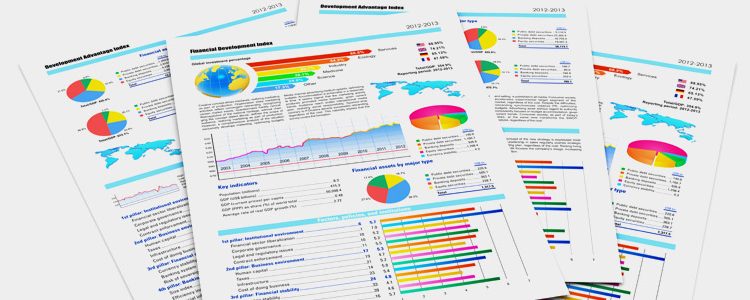Open Access Movement Grows Rapidly in Latin America
With the emergence of electronic media, many significant changes in how researchers communicated their works came to fruition. Researchers recognized their limitations regarding the dissemination of their findings and data. They began seeking new ways for the public to freely access their work and help promote the advancement of science. A new structure emerged, referred to as “open access,” that has gained considerable worldwide support.
Open access is the free and unrestricted distribution of published research. In 2001, the Open Society Foundations invited 16 participants to Hungary to create the Budapest Open Access Initiative (BOAI). BOAI recommended the following two strategies:
- “Self-archiving,” whereby researchers post their peer-reviewed journal articles in an open electronic forum, such as institutional repositories;
- A means by which researchers could create new open-access journals and encourage other journals to follow the trend.
Even before the launch of BOAI, academics in Brazil began searching for ways to share their research without restrictions. In 1997, the Scientific Electronic Library Online (SciELO) launched “a pilot program to coordinate academic publishing on the web”. The program was supported by the São Paulo Research Foundation (FAPESP) and the Latin American and Caribbean Center on Health Sciences Information. According to Abel Packer, Director of SciELO, its mission was to “strengthen the visibility of the journals”. After Latin America’s initiative, the National Commission for Scientific and Technological Research (CONICYT) in Chile adopted SciELO’s open-access-publishing model. This grew and expanded to 15 primarily Latin American countries.
Advantages and Growth
With this new trend came encouragement for researchers to seek out open-access journals in which to publish their works. Digital repositories were created, and it was recognized that open access “benefits researchers, innovators, teachers, students, media professionals, and the general public”. Researchers who cannot afford to access fee-based information are able to access and review the research free of charge. The open-access system allows scholars to easily find other researchers in their fields and access actual data and results. More information is available to anyone interested, which ultimately helps further scientific knowledge and promotes additional research. Open-access journals gain a wider range of readership, which helps to promote their publications.
The United Nations Educational, Scientific and Cultural Organization (UNESCO), in collaboration with several ministries in Latin America, Jamaica, the West Indies, and the Caribbean, organized the first Regional Latin American and Caribbean Consultation on Open Access to Scientific Information and Research, funded by the Government of Japan and by Information for All Programme (IFAP). UNESCO “promotes and supports open access for the benefit of global knowledge flow, innovation, and socio-economic development”. Its 2015 report outlines the following support to
- Enhance awareness about open access,
- Prepare and implement an open-access policy,
- Build open-access capacity, and
- Facilitate the work of existing regional mechanisms (e.g., La Referencia, SciELO, Redalyc, and Latindex).
Useful Portals to Help Developing Countries
Developing countries should consider the open-access model in Latin America when looking for a better way to disseminate scientific information. Portals, such as the Global Open Access Portal (GOAP), are available to aid these countries. GOAP provides scientific information in 158 countries and outlines successful open-access implementation. It identifies the “key players, potential barriers, and opportunities” for those countries still in the policy-making process, and provides the following specifically to
- Learn about the global open-access environment,
- View their country’s status, and
- Understand where and why open access has been most successful.
Another portal, American Education Research Association (AERA), was created to expand “open dissemination of scholarly work,” and helps create a forum in which to provide for a more knowledgeable society. In its 2012 two-day conference on open-access publishing, AERA discussions “focused on the benefits and costs of open-access publishing; economic models for open-access publishing; and the potential impact on peer review, citations, public engagement, and the dissemination of scholarly work”. Most of the funding for the development of open-access models come from local and international public funds.
Obstacles to Creating Open Access
The process of including published works from developing countries in international journals requires new open-access policies that mandate self-archiving, and governments in these regions must negotiate with commercial publishers to ensure that they will cooperate.
Latin American regions faced many challenges when creating an open-access model. With a shortage of commercial publishers, consistent printing became an issue and made for irregular publishing with low circulation and visibility. The resulting published works, in general, became excluded from international indices. Visibility has increased since the implementation of open access, which, in turn, has helped secure funding from both the State and international sources.
The model also required the institution of new policies, identification of funding, building of possibly new infrastructure, and availability of information and communication technology available for all involved to publish online. It also required the identification of peer-reviewed contents, and the willingness of stakeholders to submit to some cultural changes in the region. Researchers needed to be educated about the benefits of open access and about self-archiving in “green” repositories and other policies, such as those provided in SHERPA-RoMEO.
In addition, Internet access, connectivity issues, and speed required improvements in order to expand out of the strictly urban areas. To that end, programs such as RedCLARA and IAP helped create more digital communication education and links to promote collaboration among researchers. Copyright laws regarding open access were also confusing and needed clarification. Creative Commons was a key player in support of the open-access model and provided free tools and licenses to enable researchers to provide copyright permission to others.
All of these obstacles either were or are being overcome in Latin American regions with the help of local and international programs. Countries seeking to create an open-access-publishing model would do well to look at the Latin America initiatives for advice and support. In-depth articles describing these open-access initiatives can be accessed at https://goo.gl/xHb89G.











